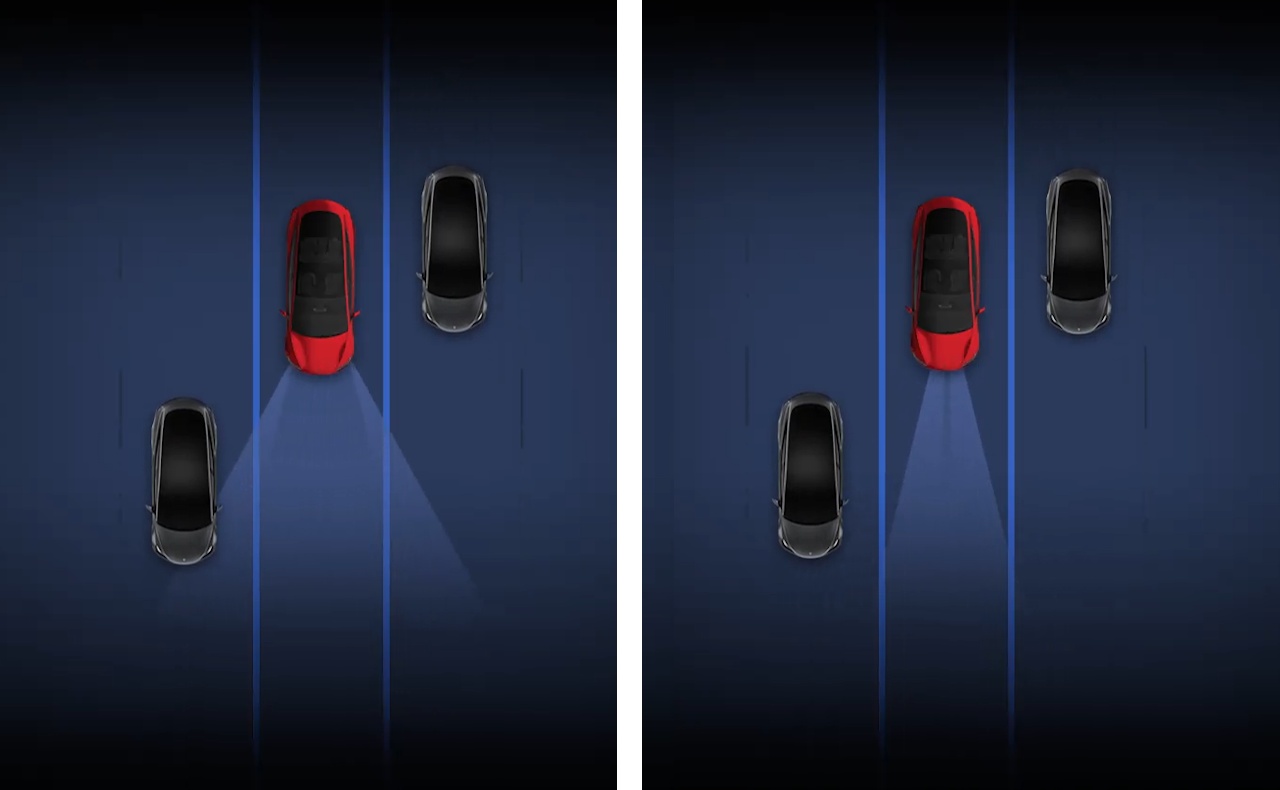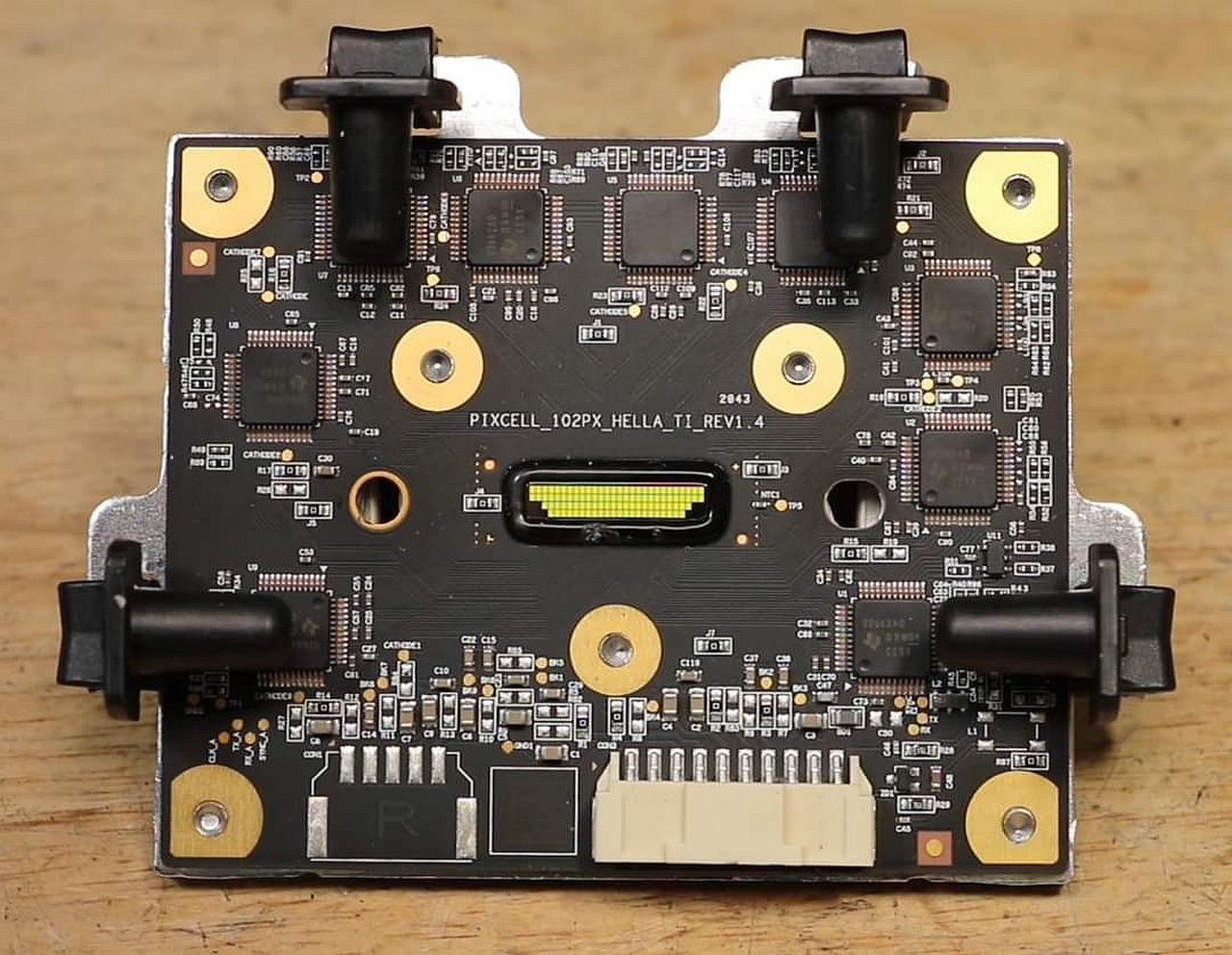The Chinese branch of Tesla has shown off a new visualisation of the Tesla Model 3 Highland’s headlights. It turns out that the car can change the width of the light beam depending on the presence of other vehicles on the road. Which at worst corresponds to additional side illumination, at best to the activation of adaptive headlights. In the coming months, we will find out which interpretation is true.
Matrix headlights in Teslas
The situation is currently as follows: most or all Tesla Model Y and Model 3 use matrix headlamps. As for the Model Y, there is basically no doubt; we saw the functioning of the new lights at the opening of Giga Berlin. What was the disappointment of the first purchasers when it turned out that they could only dream about inscriptions and sector darkening of the light field, because the headlights worked in the old way. They had a very basic adaptation function, known in other brands as “high beam assistant”, which means that they could switch off when they detected vehicles coming from the opposite direction. And then switch on.
What was missing was the control software.
Matrix headlamps vs. adaptive headlamps
The above functioning has caused considerable terminological confusion. If we accept the terms used by the automotive media, Teslas do not have adaptive headlights because they cannot deactivate individual parts of the light field. Instead, they are matrix headlamps, because they are built from an array (matrix) of diodes that can be individually controlled. The problem is that Tesla’s software could not do this and it was not known whether it would ever learn to do so. One would like to add “unfortunately”, because adaptive headlights can do quite a few tricks (below in the Audi e-tron S Sportback):
Tesla wasn’t in too much of a hurry, as the use of adaptive headlights (with shape-shifting beam) was not allowed in the US and was only approved about a year ago.
Tesla Model 3 Highland raises hopes
Now Tesla’s Chinese branch has presented some animation from which it may appear that the Tesla Model 3 Higland can control the width of the light flux. Unfortunately, the news is only second-hand and we have not found it on the brand’s European website, so we cannot 100% rule out that it is more about the camera fields of view indicating the lane the car can drive in:
HOWEVER, the animation suggests that the Tesla Model 3 Highland is capable of adjusting the width of the light beam according to the road conditions. And now two further interpretations emerge. The simplest one suggests that the fog lights – removed in the Highland from the bumper – have been integrated into the main headlamps, so they can illuminate the space on the sides when needed.
The more advanced and most desirable one states software control of the width of the luminous flux, which is basically an adaptation. And if the Tesla Model 3 Highland would be able to use its matrix-from-older-headlights adaptively, similar software could also appear in other variants of the cars, including Teslas Model 3s produced from late 2021 onwards. In a word: current and future Model 3 owners would gain an entirely new feature.

